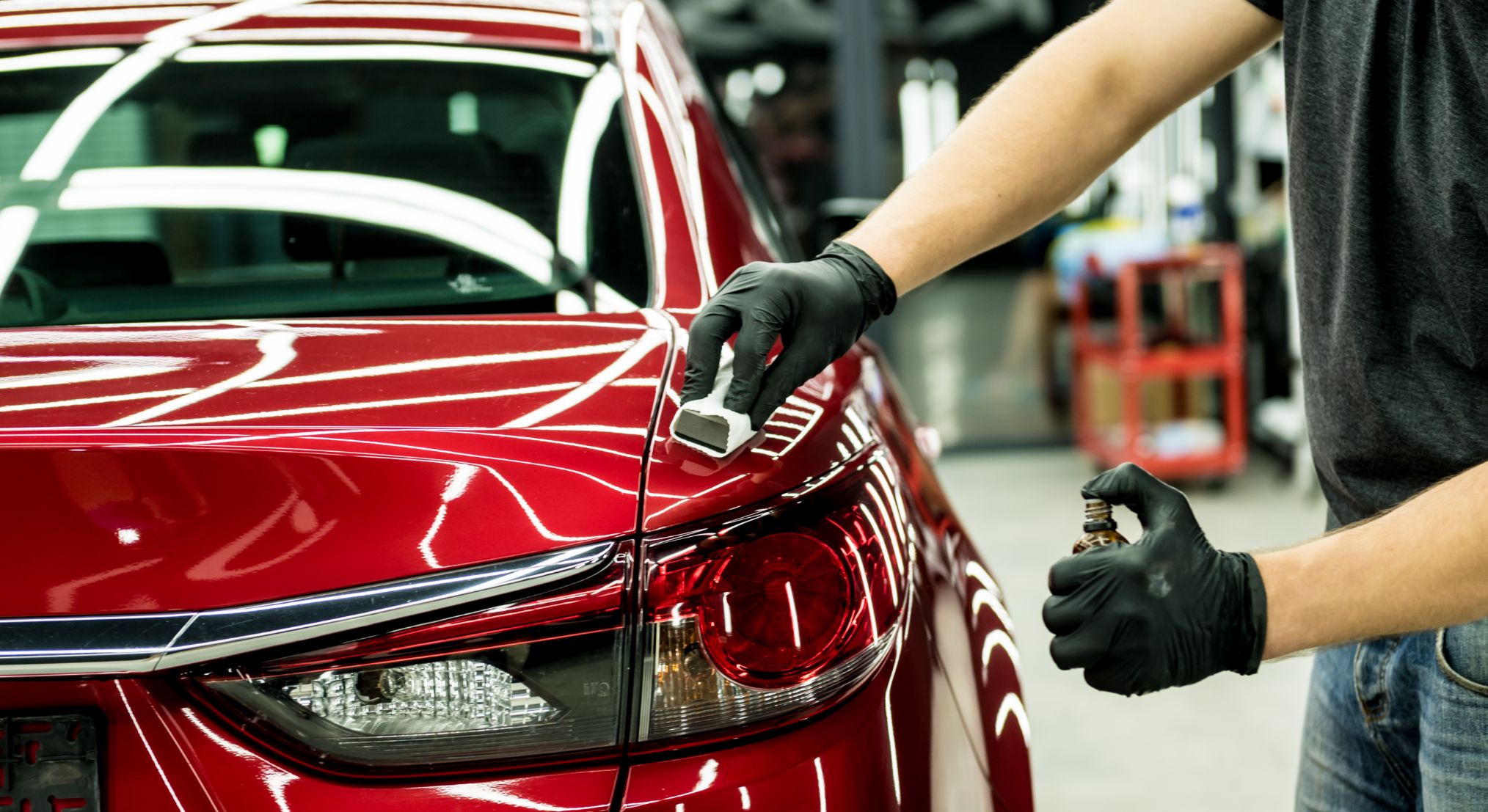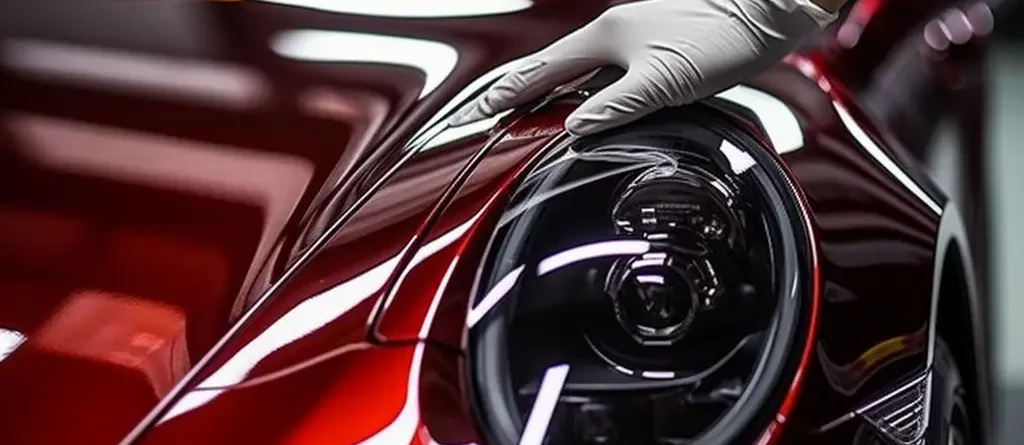How to Care for Your Car After Getting Ceramic Coating Applied
How to Care for Your Car After Getting Ceramic Coating Applied
Blog Article
Ceramic Coating vs. Traditional Wax: Which Provides Better Security?
The dispute between ceramic covering and standard wax for vehicle security is one that qualities cautious assessment, especially in terms of sturdiness, resistance to environmental variables, and general upkeep needs. While ceramic finishings assure expanded long life and remarkable protection versus a range of dangers, traditional wax might interest those seeking a much more affordable, albeit short-term, service. As we discover the nuances of each choice, the effects of your selection could have enduring results on your lorry's appearance and maintenance regimen. What variables should affect your decision?
Introduction of Ceramic Covering
Ceramic layer has actually acquired considerable popularity among vehicle fanatics and specialists alike for its innovative safety high qualities. This cutting-edge option includes a fluid polymer that chemically bonds to the vehicle's manufacturing facility paint, creating a durable layer of security. Unlike standard wax, which usually lasts for a couple of weeks to months, ceramic layers can give resilient defense for several years, depending on the item utilized and application technique.

While the first price of ceramic finishing might be higher than that of typical wax, the long-term advantages, including sturdiness and decreased maintenance regularity, often validate the investment. As vehicle technology proceeds to evolve, ceramic coatings have emerged as a preferred choice for those looking for ideal defense and durability for their cars.
Summary of Conventional Wax
The appeal of typical wax exists in its simplicity and simplicity of usage, making it a favored selection amongst automobile proprietors seeking to enhance their vehicle's appearance and provide a basic degree of defense. Typically originated from natural carnauba or synthetic polymers, traditional wax creates a slim protective layer over the paintwork. The application procedure is simple, commonly including a basic rubbing with a microfiber towel, making it easily accessible to both novice and experienced customers.
Typical wax products are offered in numerous formulas, each designed to cater to particular demands, such as boosting luster or offering water beading. The convenience of wax allows for usage on different surface areas, including paint, glass, and also plastic trim. While the application can be done by hand or equipment, the trick is to guarantee a tidy surface for optimum adhesion.
Nevertheless, one remarkable feature of standard wax is its reasonably brief life-span contrasted to modern-day options. Generally using security that lasts from a couple of weeks to a couple of months, regular reapplication is required to preserve its efficiency. Regardless of these constraints, traditional wax remains a prominent choice for car lovers who appreciate the aesthetic enhancement it offers.
Key Security Attributes
When considering paint protection for automobiles, it's important to comprehend the essential attributes that differentiate traditional wax from more advanced choices like ceramic coatings. Among the key protective attributes of ceramic coverings is their toughness. Unlike wax, which usually description lasts a couple of weeks, ceramic coatings can endure for several years, offering long-lasting security versus ecological contaminants.
Ceramic finishings create a hydrophobic surface, fending off water and protecting against dust, gunk, and other debris from sticking to the paint. This function not only boosts the lorry's appearance yet also reduces the regularity of cleaning. Furthermore, ceramic coatings provide superior UV protection, protecting the paint from unsafe sun exposure that can cause fading and oxidation.
On the other hand, standard wax offers a much more temporary obstacle against elements however lacks the resistance to scrapes and chemical discolorations that ceramic finishings provide. While wax can boost gloss, its protective capabilities are limited, especially versus harsher environmental variables such as bird droppings, tree sap, and roadway salt. In summary, the essential defense attributes of ceramic coatings considerably beat those of traditional wax, making them a remarkable choice for resilient automobile treatment.
Application Process Comparison

On the other hand, the application of ceramic coverings is more complex and time-sensitive, commonly requiring expert support for optimum results. The vehicle's surface area need to be carefully cleansed, decontaminated, and polished to get rid of blemishes before the coating is used. When prepared, the finishing is used in several layers, with each pop over to this site layer requiring specific healing times, frequently boosted by heat lamps. This meticulous process can cover numerous hours to multiple days, relying on the variety of layers and wanted coating.
Eventually, the option in between wax and ceramic covering hinges not just on security degrees but additionally on the moment, expertise, and sources offered for their corresponding applications. - ceramic coating
Cost Evaluation and Longevity
Expense plays a significant role in the decision-making procedure between ceramic coverings and typical waxes. Ceramic coverings usually command a higher in advance financial investment, ranging from $500 to $2,000 depending on the high quality, brand name, and professional application solutions. This first cost can be associated to the sophisticated modern technology and materials made use of in ceramic formulas, which provide exceptional durability and protection.
On the other hand, standard waxes are far more budget-friendly, typically costing between $20 to $100 for do it yourself applications. Nonetheless, the long life of wax products is limited, often needing reapplication every few months to keep their protective qualities. This recurring expenditure can gather in time, making wax less economical over time.
Ceramic finishings, while more expensive initially, supply resilient outcomes, commonly going beyond two to five years with appropriate upkeep. This longevity can give considerable financial savings with time, particularly for lorry owners who focus on security and visual conservation - ceramic coating. Inevitably, the selection in between ceramic finishings and standard waxes must think about both preliminary prices and lasting worth, factoring in the maintenance demands and preferred security level for the car
Verdict
In recap, my site ceramic coverings give remarkable security for automobile paint compared to conventional wax, offering improved sturdiness, resistance to ecological aspects, and hydrophobic buildings. While the initial investment for ceramic finishes is higher, their durability and reduced upkeep requirements validate the expense. Eventually, for those seeking lasting auto care and defense, ceramic layers stand for a more effective solution than traditional wax, which supplies just temporary advantages.
The argument in between ceramic coating and typical wax for automobile defense is one that benefits cautious examination, especially in terms of durability, resistance to environmental aspects, and overall maintenance requirements.When taking into consideration paint security for vehicles, it's essential to recognize the vital functions that distinguish conventional wax from more innovative options like ceramic finishes. In recap, the essential defense features of ceramic layers significantly beat those of conventional wax, making them an exceptional choice for lasting vehicle care.
Eventually, the selection in between ceramic coatings and standard waxes ought to take into consideration both preliminary costs and long-term value, factoring in the upkeep demands and desired security level for the automobile.
In summary, ceramic finishings give exceptional defense for automobile paint contrasted to typical wax, offering improved durability, resistance to environmental elements, and hydrophobic residential or commercial properties.
Report this page